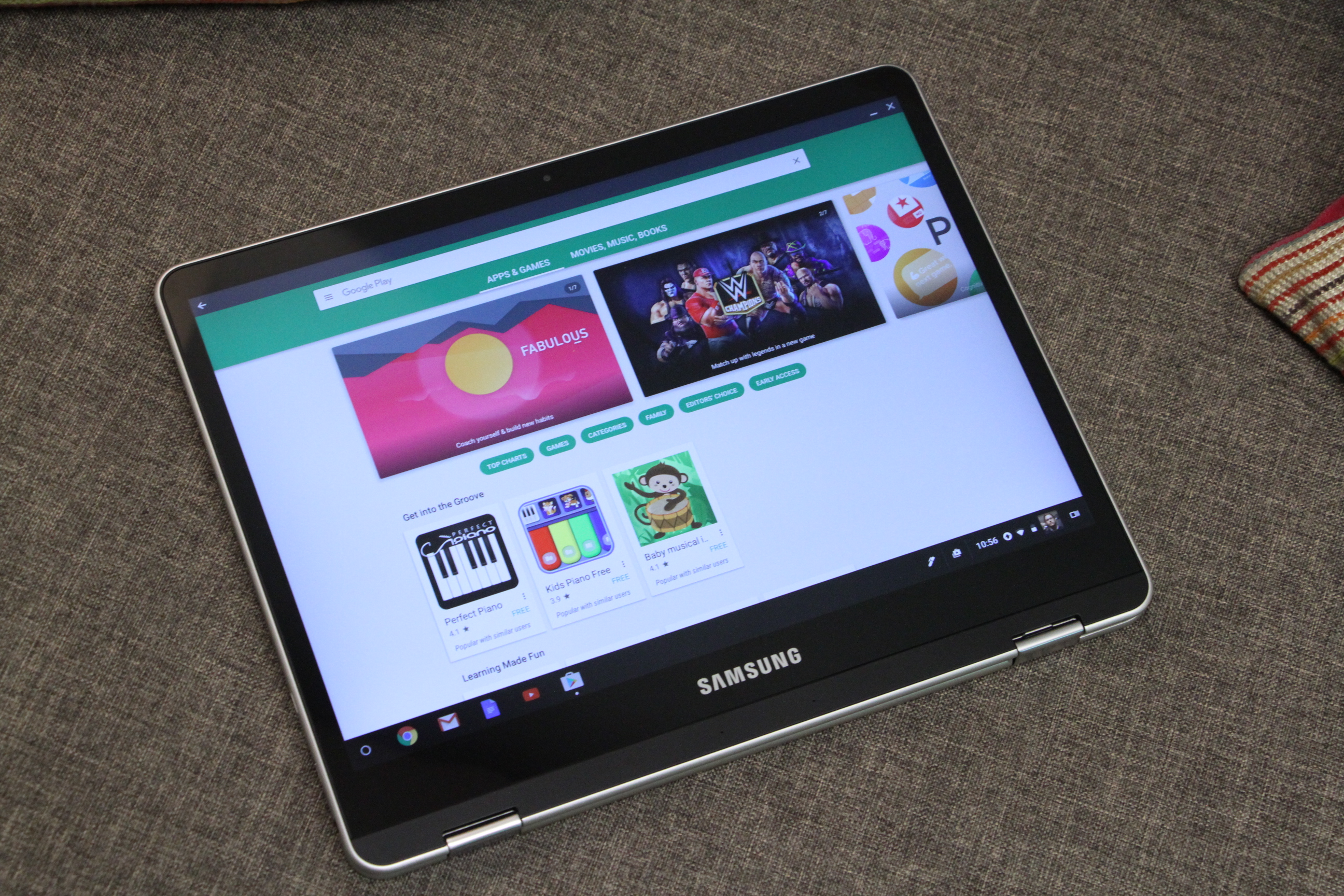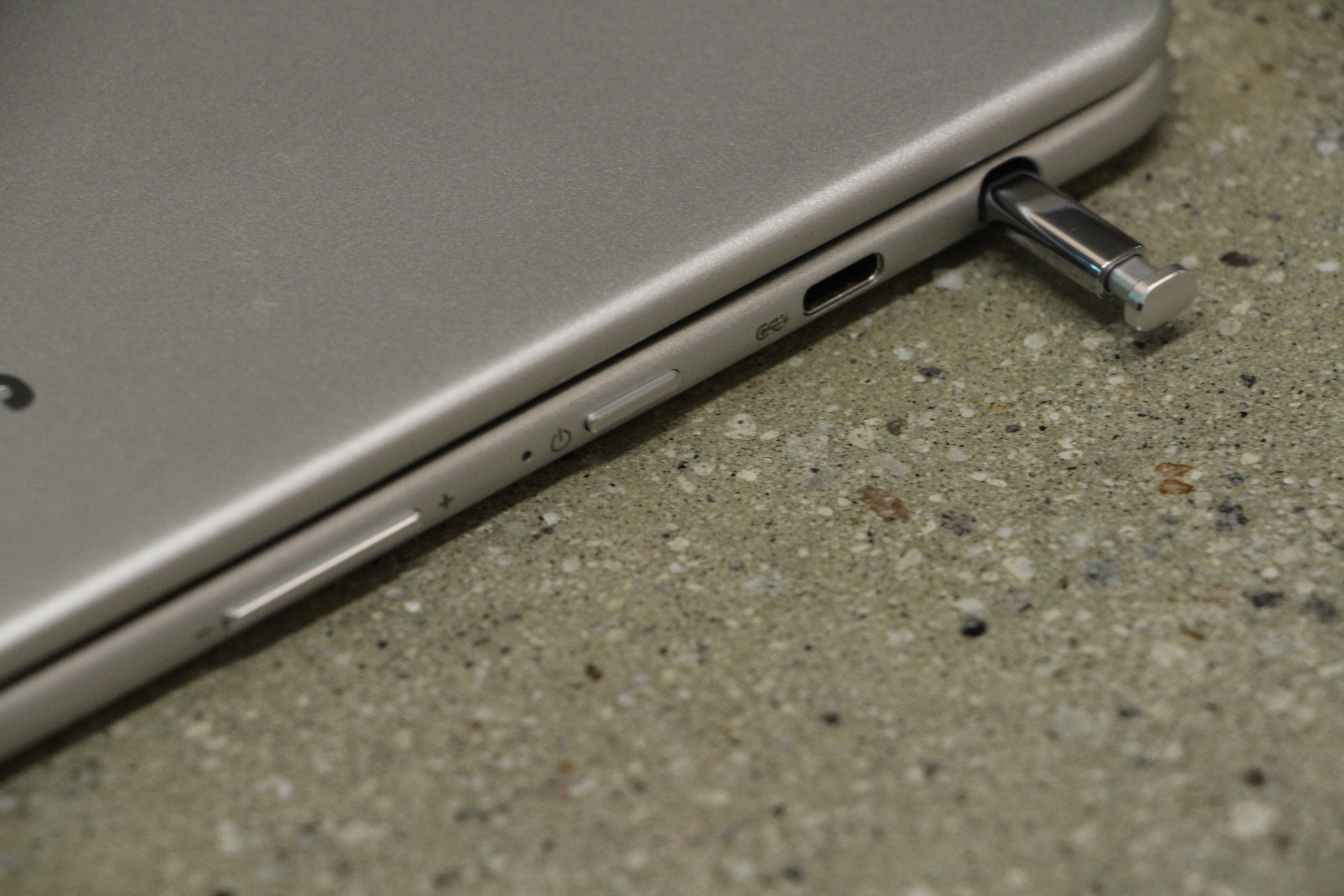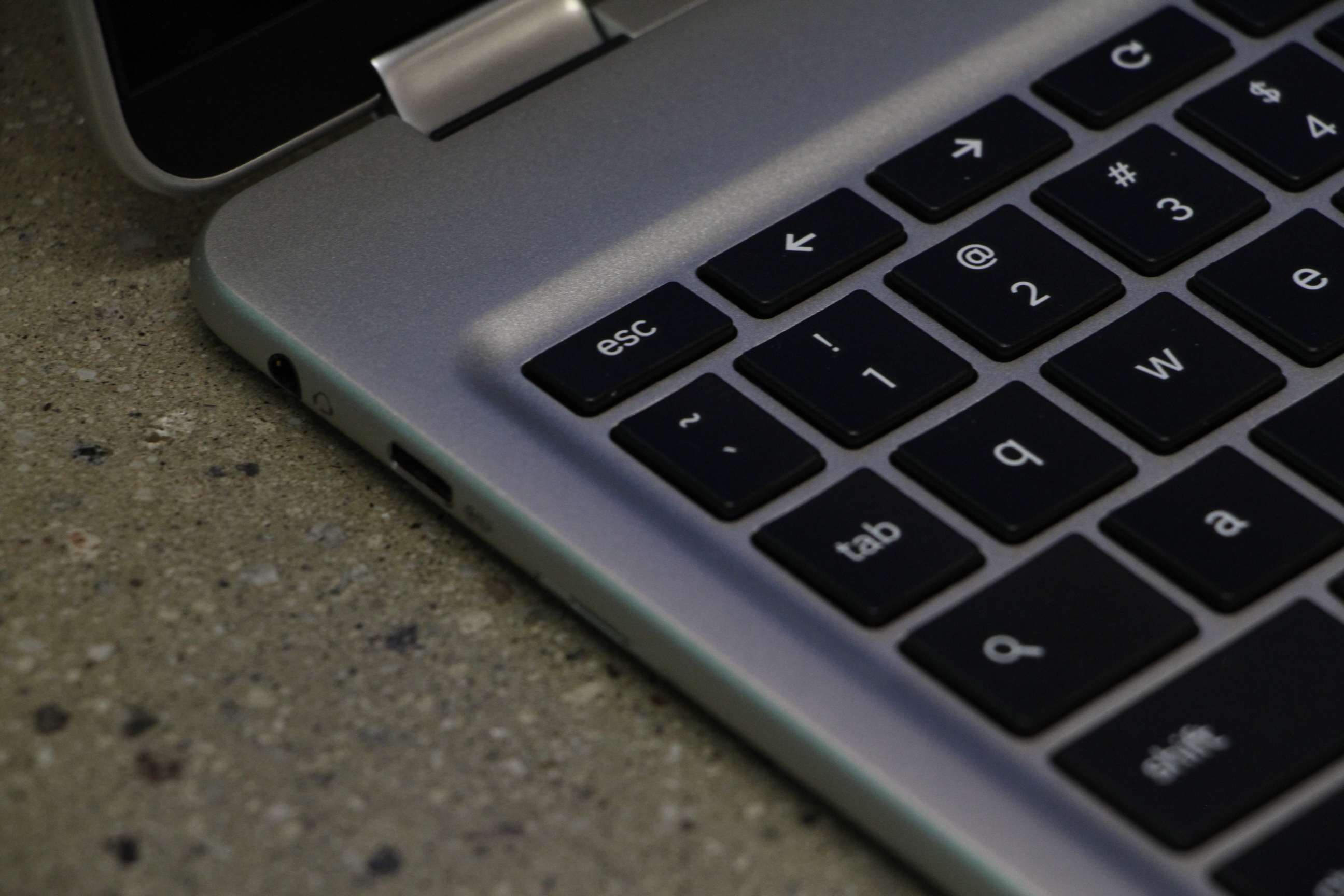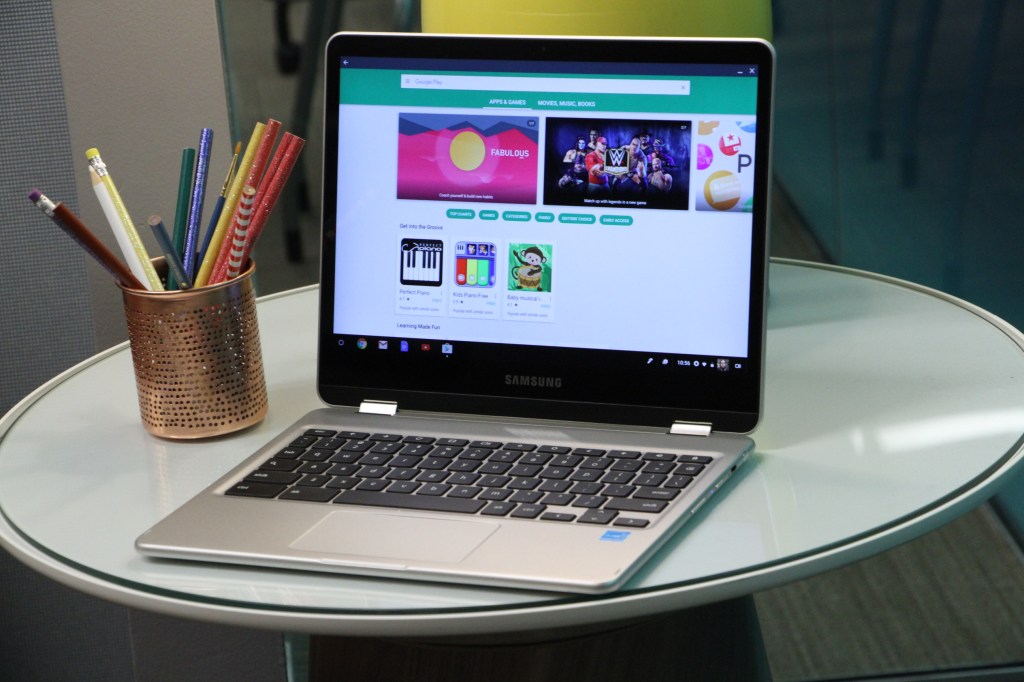Chromebooks hit a key milestone last May, outselling Macs in the US for the first time ever, by IDC’s account. It was a pretty big win for a category oft maligned at launch for its relative lack of functionality. And while the devices are, perhaps, not fully mainstream, they’ve had an impressive rise over the last couple of years.
If you haven’t had much experience with one, it’s a pretty safe assumption that you haven’t spent much time in a classroom recently. Extremely competitive price points coupled with rugged designs have made the category extremely appealing for school, a sector that has served as the driving force in the products. But have the devices seen enough progress to justify purchase after graduation?
Announced at CES back in January, Samsung’s two new Chromebooks serve as a good signpost for how far the category has come in the five-and-a-half years since it was first launched, coupling offline functionality with a newfound access to Google Play, opening the laptop up to a sea of Android apps. That coupled with a convertible form factor and the very Samsung-esque inclusion of a stylus (née S-Pen) make for one of the more compelling Chromebooks in recent memory.
Chromebook by its cover
The Chromebook is fairly simple as the name implies, with two pancaked pieces drawn together by large silver hinges. It’s an unassuming looking thing – more or less what you’d expect from a budget system. The “Platinum Silver” coloring is nice enough to look at, though the finish scuffed extremely easily as I ported it around town in my backpack, so you’ll probably want to pick up a devoted case for the thing.
Like the (vastly more expensive) new MacBooks, Samsung’s Chromebook aims for port homogeneity, with a single USB-C on either side, which can be used to charge the device, plug in accessories and stream to and charge a 4K monitor, if you really want to get fancy with your $449 Chromebook.
There’s a headphone jack and microSD slot on the left; volume rocker, power button and stylus housing are on the right. Two small speaker grilles are positioned on the underside of the Chromebook, elevated from the desk by a quartet of rubber feet.The system is 0.55-inches thick, weighing in at 2.38 pounds – that’s a bit thicker and heavier than a MacBook, but certainly portable enough to pop into a backpack.
The keyboard is a bit cramped – taking a bit of getting used to if you’re making the jump from something full size – but it’s pretty easy to adapt. Ditto for the keys, which are a bit on the soft side. The track pad is fairly small as well, and a bit laggy on the default setting – though between the touchscreen and on-board stylus, there’s really no lack of methods for interacting with the system.
Sound and Vision

Samsung’s new Chromebooks sport a 12.3 inch display that clocks in at 2,400 x 1,600, making it Quad HD – and markedly higher-res than recent comparable offers from the likes of Dell, Acer and ASUS. Honestly, it’s a really great display for the price point.
Granted, these devices are largely positioned for business/education, but the inclusion of Google Play access really opens the system up to a slew of entertainment options. Coupling that with a sharp and bright display makes the system that much more appealing for users looking for a solid utility player at a good price.
And then, of course, there’s the 360-degree hinge, which turns it into a (albeit thick) slate or lets the keyboard double as a kickstand for movie viewing. The built-in accelerometer also means you’ll be able to utilize movement for mobile gaming, in the case of titles that require you to tilt a handset for gameplay.
The speakers, meanwhile, are nothing to write home about – as you’d no doubt expect from the category. They do get plenty loud, however, so they’ll probably do for a little music listening or watching an episode or two of a show. Otherwise, you’ll probably want to look into some headphones or a Bluetooth speaker.
Beyond the Chromebook

The addition of the Google Play store is definitely the nicest new feature for this latest generation Chromebook. Native support will be coming across the line, but for now, Samsung’s devices are one of the few places you can get the functionality. It’s a great addition and a quick fix to the ongoing issue of Chrome OS app selection.
If it’s in the Play Store, you can download it, though, as with any convertible, it’s important to remember that a lot of the apps aren’t optimized for the form factor. In most cases that’s only a minor inconvenience when factoring in all of the functionality it opens up. The system is currently in beta (it will be live when the system is available at retail in April), but I didn’t encounter any major issues.
And, of course, it wouldn’t be a new Samsung product without the addition of a stylus that tucks neatly into the product’s side. The company’s been careful to point out that, while the hardware is the same, this is emphatically not an S-Pen – a distinction is draws not so much because of the Note connection as the software it utilizes.
As the company points out the S-Pen is part of a very specific mobile software suite. Instead, the company worked directly with Google to create a hardware software experience designed to provide a more seamless writing/drawing experience with the input device. And it largely delivers, utilizing a predictive algorithm that helps reduce the lag, creating a smooth experience.
Like the S-Pen, the stylus immediately triggers an on-screen pop up when you pull it out. From there, you can capture screen shots, utilize the tool in a presenter mode or open a new note. The on-board functionality is fairly basic – probably not advanced for anyone who wants to create serious artwork on the thing, but those often take notes by hand will find the stylus a nice addition.
In its current form, it’s not really enough to make or break the device for most users, but it’s a nice feature to have.
Plus or Pro
Samsung’s two new Chromebooks are virtually identical inside and out. You’ll find a decent 4GB of RAM, coupled with 32GB of storage. That’s not much for a notebook, granted, but it’s a step in the right direction as Chromebooks continue to expand their offline functionality. The systems also support a MicroSD slot on the side, so you’ll be able to expand that a bit, particularly handy with all that new app access.
The battery life is rated at eight hours, and indeed, I found I was able to get a solid day’s use out of the system without plugging it in. Not the best in the laptop business, but certainly enough for most real world uses.
The only real difference between the systems is small but important. The Plus features an ARM processor – similar to what you’ll find on a mobile device, while the Pro sports and Intel m3. That alone is enough to justify the price difference between the systems –$499 vs. $549. In a sense, it also represents a symbolic divide between older Chromebooks and ones with full-fledged laptop aspirations.
The decision to upgrade depends entirely on what you’re hoping to accomplish with the system. If you’re looking at the Chromebook as a simple secondary device to complement your daily laptop driver, the Plus should serve the purpose. If you’re expecting the system to do some real computing, you’re going to kick yourself for not spending the extra $100 to upgrade.
Chrome sweet Chrome

If early Chromebooks (understandably) put you off the space, you may be overdue for a revisit. The category has come a ways since the first generation, transforming from a machine defined by its limitations into a legit low-cost computing device – it’s a transformation furthered by the addition of Google Play.
Samsung’s new Chromebooks aren’t exceptional, so much as they are a good signpost for that progress. The devices are low cost, capable and have a number of welcome hardware additions like the hi-res, 360-degree display.































Comment